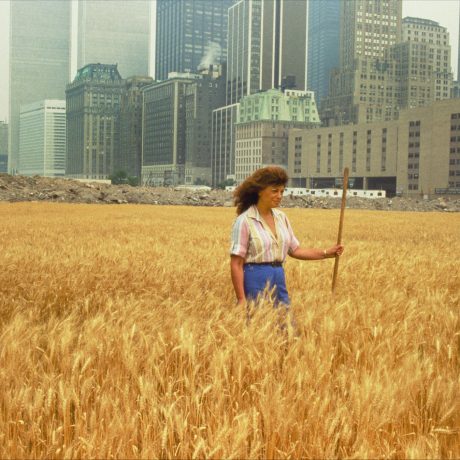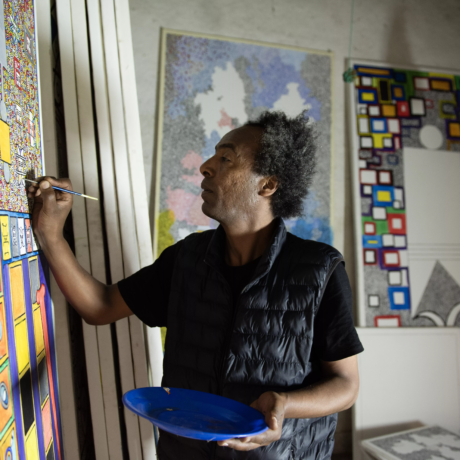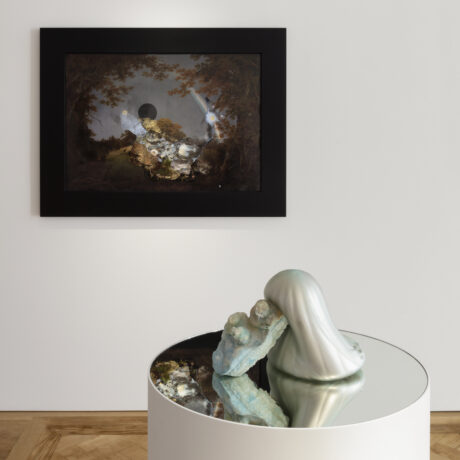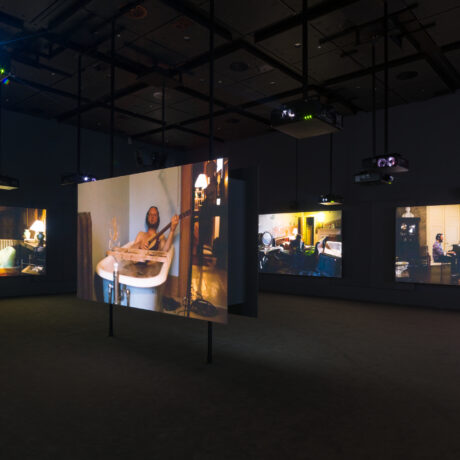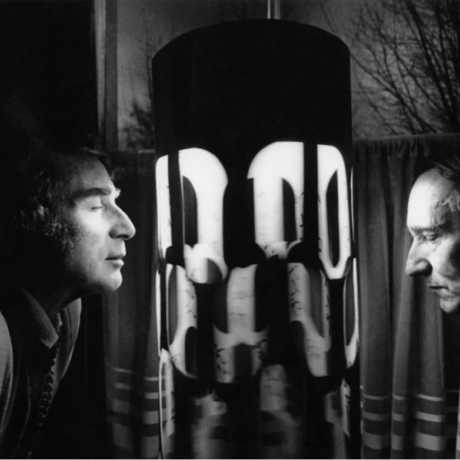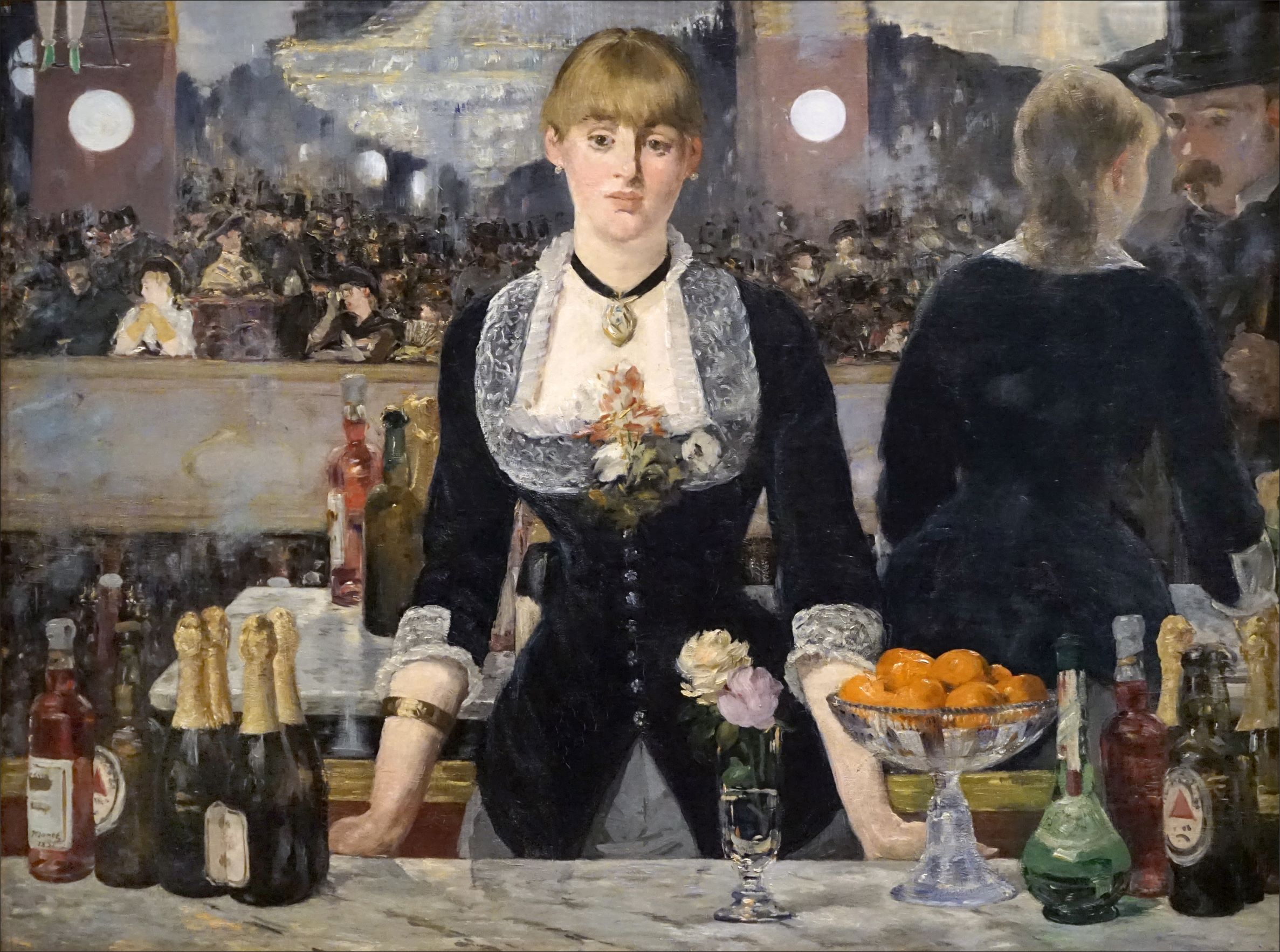
The first time I saw her, I didn’t make it past her face. My eyes caught on her jagged fringe, brushed to a sheen, and her flushed cheeks, an entirely different shade from her porcelain neck and chest. I lingered over her rosy lips, pressed together and partly in shadow, just like her nose, long and straight. I traced the gentle curve of her chin, and her heavy lids. I took in the hint of mascara on her lashes, the faint smudge of kohl. I looked at her, and she looked straight through me.
Her name is Suzon, and she’s the self-contained star of Édouard Manet’s last painting A Bar at the Folies-Bergère. This monumental canvas, completed in 1882 and exhibited at the Paris Salon, hangs in the Courtauld Gallery in London’s Somerset House. I studied at the Courtauld Institute, just across the way, and this portrait was a companion for me then and has continued to be ever since. I’ve stared at it more times than I can remember, blocking out the background noise, losing myself in the layers of oil paint. The thing that keeps me coming back, again and again? She gets it.
Suzon stands behind a marble counter topped with champagne wrapped with golden foil, glossy clementines in a crystal bowl, and a couple of roses (one yellow, one lilac) arranged in a half-filled glass of water. Behind her is a gold-framed mirror that reflects a crowd mingling in a busy interior.
“I’ve stared at it more times than I can remember. The thing that keeps me coming back, again and again? She gets it”
The mirror reminds us that the Folies-Bergère was a café-concert (a fancy kind of beer hall) with light entertainment – that night it was acrobatics. Dangling at the top of the painting are two pale legs, their feet clad in minty-green slippers, their owner out of sight, balancing on a trapeze. Then there’s a more common spectacle: opposite Suzon is a whiskery man with a top hat and a cane, who stops and stares at her intently.
It sounds silly to say that Manet, the painter of modern life, introduced me to the modern woman and the obstacles she navigates every day. Maybe introduced isn’t the right word, maybe showed is better.
Suzon leans on the bar at the end of a long, tiring shift, disillusioned, trying to ignore the merry crowd, not to mention the slippery clientele. Like the lush still life on the bar, she’s on display, dressed in a tightly buttoned, lace-trimmed bodice, with a reddish-green flower pinned between her breasts. Small earrings pierce her lobes. A locket on a black ribbon hangs around her neck. She’s alienated and alone and unable to escape the male gaze.
“The reflection doesn’t match. It cast doubts in my mind, doubts about the painting’s logic, what it all means”
Manet captured in paint unfamiliar feelings I’d been experiencing in my early twenties. Sad, scrutinised, kind of stuck. Depressed, it turned out, though for some time I didn’t have the language for it. Not all day every day, but at some point, most days. Also, lonely, the kind of lonely that flourishes in a city and can gnaw even when you’re in a packed room. I remember feeling it on the tube when I glanced around a carriage of strangers silently thumbing their phones. I remember feeling it in the crush of Oxford Street, too.
Manet captures that sense of isolation and amplifies it. Suzon is hyper-realised, high definition, while everyone around her is a blur, no more than a few fleshy smudges of paint, a haze of pale pinks and darker tones illuminated by powdery white electric lights and dull and yellowy chandeliers. Marooned behind the bar of this popular Parisian café-concert, serving revellers who come and go, she’s quietly anguished. Seen and unseen. Present and entirely absent.
A few years after I graduated, the Courtauld Gallery closed for refurbishment. But I continued to visit Manet’s barmaid in my head. Considering my affinity with Suzon, it’s perhaps unsurprising that she’s found a way into my writing. My first novel, Wet Paint, is about navigating the world as a twentysomething woman. It’s about unspoken anxieties and sadness, and the way women are looked at in life and in art. My protagonist, Eve, is the kind of person who, if you asked how she was, would tell you she’s fine. Once a week she visits Suzon, who’s almost her de facto therapist.
“Manet captures that sense of isolation and amplifies it. Suzon is hyper-realised, high definition, while everyone around her is a blur”
When I did eventually make it past her face, I realised something wasn’t right. In the mirror Suzon leans eagerly towards the moustachioed man, but we see her standing bolt upright, wearing an enigmatic expression. The reflection doesn’t match. It cast doubts in my mind, doubts about the painting’s logic, what it all means.
And then I realised, that’s the point. Modern life is strange and unpredictable. The daily grind is hard, cities are lonely as well as lavish, gender relations are precarious. Life is a puzzle each of us is trying to piece together, and we can’t always get it right. Once I understood that, I felt a part of the crowd (and still separate).
Now, when I look at Suzon, she looks right back at me.
Chloë Ashby is an author and arts journalist. Her first novel, Wet Paint, is published this week by Trapeze
